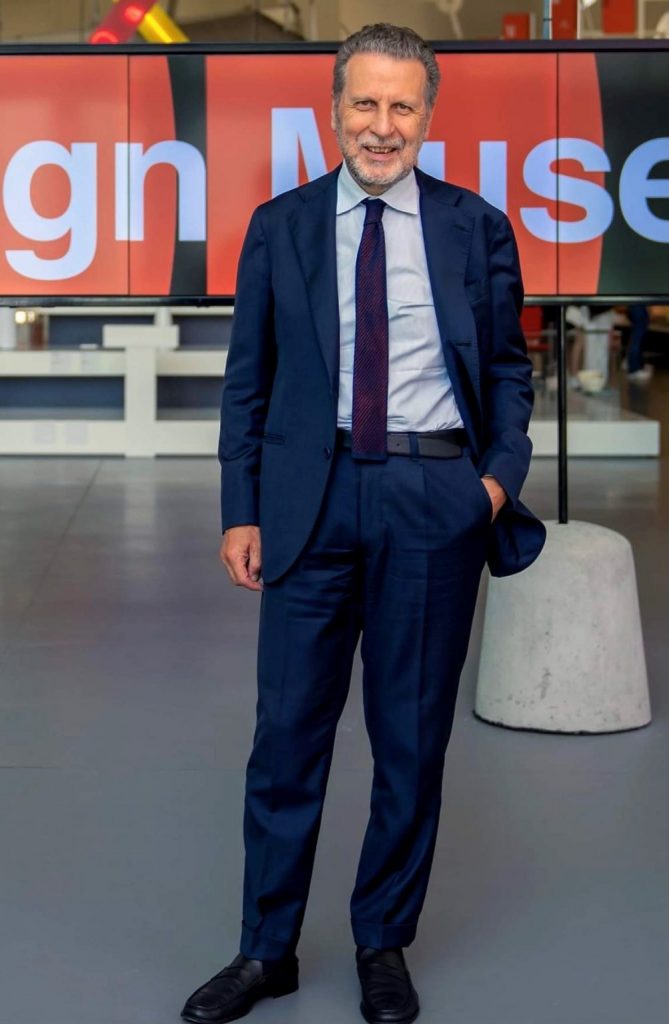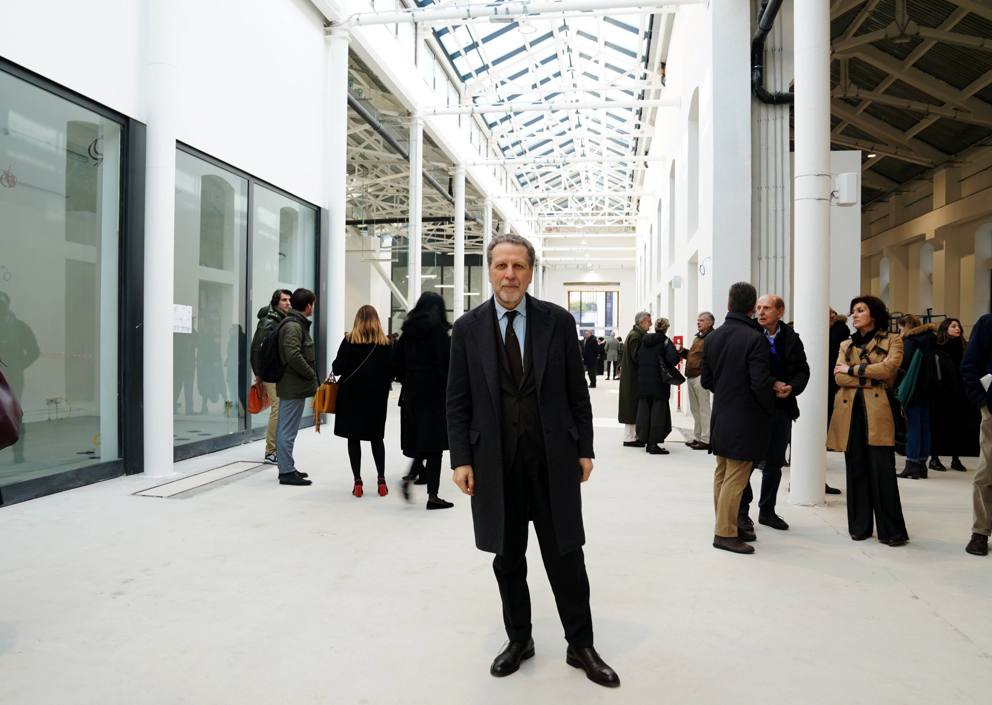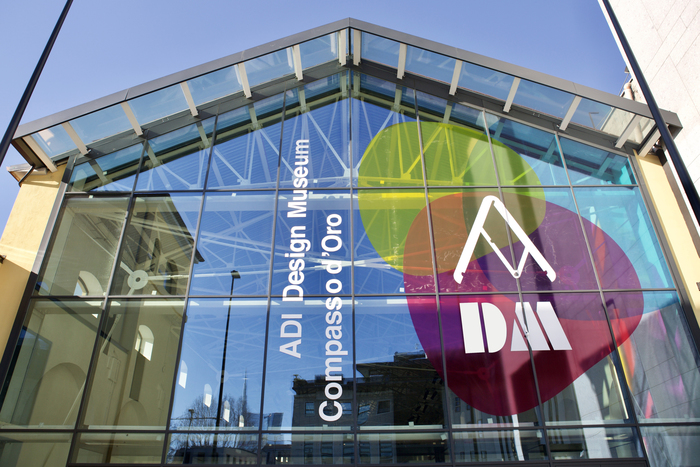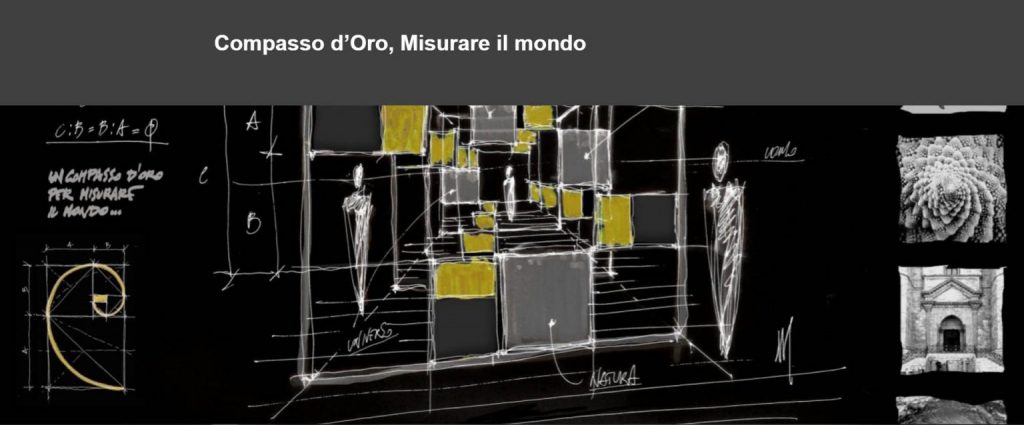It all started with a phone call, a few weeks after the inauguration of the ADI DESIGN MUSEUM and of LOM – Locanda Monumental Workshop, the headquarters of our Milan laboratory dedicated to research on sustainability and the design of relationships.
Meeting Andrea Cancellato – director of the ADI Design Museum and current President of Federculture, member of the Steering Committee of the Human City Design Award in Seoul – was nothing short of enlightening.
In his long and rich career in the sector – general manager of the Milan Triennale, CEO of Material ConneXion Milan, CEO of CLAC, to mention just some of the prestigious positions he’s held in recent years – we’ve already had the honour of meeting him and discussing with him.
This chat, however, was revealing.
Perhaps because it marked a new beginning for design and manufacturing, perhaps because one can only learn from Andrea Cancellato… in fact we think that his knowledge and vision of the future of Design is extremely interesting and stimulating.
Our idea was to get to know an incredible entity like the one Andrea Cancellato is showing at ADI, but the chat between Cancellato and our CEO soon became something more.
So we decided – with the authorisation of the person concerned – to talk about it, because it really deserves it.

Filippo Berto: Andrea, thank you for your availability, we really appreciate it. Let’s start from the heart of the matter, at least in our opinion: manufacturing.
For me, the opinion of the director of the ADI Museum is very important, so I’d like to ask you: what is the place of manufacturing in the field of design?
Andrea Cancellato: I believe that the ADI Design Museum is a hymn to Italian manufacturing.
It’s mainly the award-winning items which are presented inside, along with fewer research and thought activities; essentially it’s a museum made up of objects. This is because Italian design is the best in the world, particularly in manufacturing design.
In “doing things” we’re number one, while when it comes to information technology and services related to design, there is a much more relevant international competition.
The Compasso d’Oro Museum practically demonstrates that the “design of doing” is not the result of the designer’s creativity alone, but is the result of the intersection of multiple skills, which cross the chain of the creation of a project and an object. This is the key point.
We’ve been interested in this aspect since the first day, when we thought up the idea of our museum. Let’s say that from this point of view, the museum reflects itself with the quality of Italian Design.
FB: Manufacturing and Compassi d’Oro, what is the relationship between them?
AC: A very clear relationship with a lot of osmosis.
The Compasso d’Oro was born from an idea by Gio Ponti for la Rinascente. La Rinascente‘s intent was to reward its best suppliers of items offered for sale to the public.
This happened in the period of the great industrial transformation, when the war industry was transformed into light industry, a producer of products to service the Italian economic boom and the exponential growth of the Italian population.
There were no more war dead, there were newborns from the post-war euphoria; the country was growing tumultuously and was even overproducing relative to its needs (because it was basically a poor country, a loser from the war).
Overproduction requires quality – to attract other markets internationally – and it’s here that design expresses its great strength.
So the Italian industry was completely transformed at the service of Made in Italy.
At a certain point, la Rinascente was no longer able to manage the Compasso d’Oro, which was a source of possible conflicts with and between suppliers, so it decided to hand it over to ADI. From that moment on, ADI grew up around this highly prestigious award as a representative of the Italian design system.
Recent research tells us that awarding the Compasso d’Oro increases turnover of a product by more than 25%. There is no cash prize; the prize is the prestige.
The increase in value reflects back on everyone who works on the creation of an object which receives this recognition and this is also the crux of the competition which the Award produces.
The transition between the 60s – in which ADI began organising the Compasso d’Oro – and the 70s – the era of the explosion of Made in Italy – is fundamental.
Also in the 80s there was a huge boom in design, especially with regard to industrial development.

FB: Another question which is particularly close to my heart: we have the know-how, the ability to communicate, from the hands of the super-specialised craftsman who gives birth to the design to what ultimately becomes the piece. So at what point in this process does the object become language? At what point in this process does the object become communication?
AC: Surely the turning point from this point of view was born in the 80s: the object, which also had to have a strong aesthetic component, as well as being useful became beautiful.
The design of a designed object first of all expresses the need to solve a problem: sit down, lie down, cook, go to the bathroom, etc.
Faced with a citizen/consumer need, the company and its designer solve it in a functional and also aesthetic way. But, if this were enough, there would be no need for all these products on the market.
In fact, design also deals with the unspoken needs of citizens. Among these needs there is also the need to play with colours, materials, dreams, sensations, the soul of the person and his home.
The house – to use a metaphor which works a lot with Italian design, because a large part of this is linked to the living system – is the most intimate place for a person where he really expresses himself.
As Alessandro Mendini said:
“What things are we? we are this chair and not this other one, we are that armchair and not that sofa, we are that vase and not that bowl, etc.“.
The variety of the offer expresses some communication concepts which go beyond the satisfaction of a primary need.
The primary need is to sit down, but sitting on a plastic chair and sitting on a glass chair means visiting two different worlds.
Then we have the transparent plastic chair which could be assimilated to glass; there we enter into a further, much more complex thought.
Who started the fundamental turning point?
Who first raised the great question of empathy for the objects which surround us or which should surround us?
Sottsass with Memphis: when he presented this collection the world went wild.
This is because a rift has opened with apparently useless objects, but with an extraordinary communication capacity.
Using less noble materials than solid wood and glass, like laminate and ceramic, everything is transformed into a more industrialist system. The introduction of plastics also played its part in establishing the industrialist system.
In fact, plastics allowed (and allow) the use of colour in a simpler way than any other furnishing product, as well as costing less.
In those years, the thinking about environmental risks was very “immature”; a company of the time even advertised its plastic products with the phrase “We don’t even cut down a tree” and so we protect the environment.
I’m not here to make a moral judgment, but I want to make people understand how, through the change of materials, the perception has changed and how this is combined with communication.

FB: Let’s go back to the beginning; let’s talk about the workshop and design. Do you think the stars still talk to cabinetmakers today as Castiglioni and Magistretti did?
AC: Yes, they talk to the cabinetmaker, the technician, to the small company in Italy. They talk where they find an interlocutor who is able to do better than them, to best implement their design ideas, even before their projects.
The great strength of Italian design has always lain in combining extraordinary creative personalities with technicians who are equally good in their field.
Therefore, the idea has settled in the imagination of any designer in the world that if he wants to do a special and “well-done” project, he has to do it in Italy.
Even the great designers are “artists”; they are characters who love quality. The projects they care about most, they prefer to entrust them to Italian companies.
They will be niche products, they will probably not bring enormous economic satisfaction to anyone, but they signal an indisputable fact: our country imports brains especially with design.
I don’t know which and how many other economic sectors in our country have the same capacity for importing intelligence and exchanging quality equal to design.
FB: Speaking specifically of the district, I wanted to ask you: we have the global dimension of Italian design, we put the concept of district close to it with its local characteristics. What image comes out of it?
AC: The district is the place where the transmission of knowledge, of “know-how” and also of problems, takes place with a mechanism which is less formal, but at the same time more authentic. What does it mean?
If we think of mythical places of Italian design production, like Strada Novedratese, on the same road we come across companies of the highest quality, suppliers of equally important quality, subcontractors, artisans, even logistics companies.
A fact emerges from this: the solution to problems is often found simply by crossing the street. This is a typical Italian trait, which no-one has ever managed to replicate anywhere else in the world, however hard they’ve tried.
At the same time, this feature contains the great criticality for companies which are too small: family-run businesses, the ageing of workers and technicians, some disrespect between one company and another.
All this takes place in the field of design, but not only there.
I like the metaphor of crossing the street to do everything.
It’s like that in some cases. That’s how it is at Meda.
Yes with all its limitations: its size and lack of foresight.
As you said, we’re a source of attraction for the rest of the world, because we allow these creatives to create with excellence.
It’s clear that with the new communication technologies today, some of the typical activities of an industrial district can be relocated.
You can even design away from the place of production and still check on the outcome, which you couldn’t do before.
What you can’t do is replace the place of production.

FB: I wanted to ask you about the work you’ve done, what results you’ve achieved with the museum. Tell me about this extraordinary work… how did it start? what happened? with what background? and what processes? And above all: is there a chance to attract interest in design and manufacturing?
AC: The basic idea was to create a museum which was both popular – and could therefore make ordinary people understand what we mean when we talk about design – and in which the insiders could easily recognise themselves .
When we talk about insiders, however, we’re not talking about an elite – this is over 100,000 people. When we talk about people, we’re talking about citizens who are immersed in design in a sometimes unconscious way, who feel targeted by this word, design, in its various forms: food design, car design, service design, digital design, furniture design, etc.
These words are united by the term design, so the goal was, is, to try to explain to our interlocutor what design is.
By “design” we definitely don’t mean not an artistic product.
The mode of representation chosen was to expose the object to be admired, without putting it on a pedestal. This is placed in a context of other artifacts, to demonstrate that it itself is the result of a path which is not born only from the brilliant intuition of a Castiglione or a Magistretti.
These artifacts, documents, prototypes, projects, photographs, etc. are present with the same dignity as the objects because they are an integral part of the same family.
As ADI we would like to emphasise the presence of a system, in which the skills necessary for the relationship and affirmation of a product are different and complementary and sometimes contradict each other. The outcome, the product, is the point of synthesis.
It is a story and what we see is the result of this process, which we must be able to tell.
This is the museum.
The whole manufacturing system finds its home in our museum; our museum is the home of design. Design is the leading actor, but without the set designer, the director, the machinist, this film wouldn’t have life.
ADI is the house of design and is the home of all its “experts”.
FB: How were you received by the city of Milan?
AC: We’re only at the beginning, but I have to say it was with great enthusiasm and attention, above all our expectations. For now it’s enough but it we mustn’t rest on our laurels. Now the hard work of everyday life begins.
Many thanks to Andrea Cancellato, both for the time he’s given up for us and for the invaluable contribution he’s granted us.
